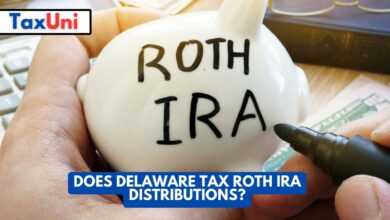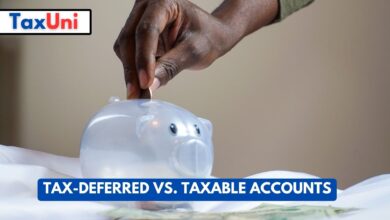457 Deferred Compensation Plan
A 457(b) plan is a type of non-qualified, tax-advantaged deferred compensation retirement plan that is available for certain employees of state and local government and some non-profit organizations. The "b" stands for the subsection of the Internal Revenue Code where it is described. This retirement plan allows eligible employees to save for retirement by deferring income taxation on the wages placed into the plan until the funds are withdrawn.

Contents
Who is Eligible for a 457(b) Plan?
Eligibility for a 457(b) plan is typically restricted to employees of state and local government entities, including police officers, firefighters, and teachers, as well as certain employees of tax-exempt organizations under IRC Section 501(c). It is important to note that eligibility can vary between different employers and plans, so employees should consult their human resources department or the plan administrator for specific eligibility information.
How do 457(b) Plans Work?
Participants in a 457(b) plan can allocate a portion of their salary to the plan, thus deferring tax on the income until it is withdrawn, usually at retirement. The funds within a 457(b) plan can be invested in various options, such as mutual funds, depending on the offerings of the plan provider. Upon withdrawal, the deferred income is then subject to income tax. However, withdrawals prior to the age of 59½ are not subject to the 10% early withdrawal penalty, unlike other retirement plans such as a 401(k) or 403(b), which is a unique advantage of the 457(b) plan.
Contribution Limits
Annual Contribution Limits
For the 2024, the annual contribution limit for a 457(b) plan is $20,500. This is the maximum amount an employee can contribute to their 457(b) plan. It’s crucial for participants to stay updated with these limits as they are subject to change and often increase periodically to account for inflation.
Catch-Up Contributions
Employees who are closer to retirement have the ability to make additional catch-up contributions to their 457(b) plans. For instance, those who are within three years of the plan’s normal retirement age can contribute up to double the standard limit, which would be $41,000 for 2024. Furthermore, employees aged 50 and over can also make a standard catch-up contribution, allowing them to contribute an additional $6,500, bringing their total to $27,000 for 2024.
Rollovers
A rollover allows funds to be transferred from one eligible retirement plan to another without triggering immediate tax consequences. For 457(b) plans, rollovers can generally be made to another 457(b) plan, a 401(k), a 403(b), or an IRA. However, it’s imperative to follow the IRS rules and plan provisions to ensure the rollover is done correctly.
| Contribution Type | Limit for 2024 | Additional Notes |
|---|---|---|
| Standard Annual Contribution | $20,500 | Applies to all eligible employees |
| Over Age 50 Catch-Up | Additional $6,500 | For those aged 50 or older |
| 3-Year Catch-Up | Up to double the standard limit | Close to retirement age |
| Rollover | Varies | Must be an eligible retirement plan |
In conclusion, a 457(b) plan offers a flexible and tax-efficient way for certain employees to save for retirement. It’s critical for eligible individuals to understand the workings of the plan, their contribution limits, and options like catch-up contributions and rollovers to maximize their retirement savings. As always, it’s advisable to consult with a financial advisor or plan administrator to make informed decisions tailored to individual retirement goals.
Tax Benefits of a 457(b) Plan

Tax-Deferred Contributions
One of the primary advantages of a 457(b) plan is the ability to make tax-deferred contributions. This means that the money contributed to the plan is deducted from the employee’s paycheck before taxes are calculated, thereby reducing the individual’s taxable income for the year. The funds then grow tax-deferred until they are withdrawn, which can have a significant impact on the growth potential of the retirement savings.
Tax-Free Withdrawals
While the contributions to a 457(b) plan are tax-deferred, not all withdrawals are tax-free. However, if the plan allows for Roth contributions, where post-tax money is contributed, those specific distributions may be tax-free, provided certain conditions are met, such as a five-year holding period and withdrawals made at retirement age.
Early Withdrawal Penalties
A unique aspect of 457(b) plans is the absence of early withdrawal penalties. In most retirement plans, withdrawals before the age of 59½ can trigger a 10% penalty fee. However, with a 457(b) plan, there are no penalties for taking money out before that age, making it a particularly flexible plan for early retirees or those who need access to their funds sooner.
Withdrawal Options from a 457(b) Plan
| Withdrawal Reason | Description |
|---|---|
| Normal Retirement | Withdrawals made at the age of normal retirement can be taken without penalties, and taxes are paid at ordinary income rates. |
| Disability | If an individual becomes disabled, they may access their funds without penalties, although ordinary income tax still applies. |
| Death | In the event of the participant’s death, the funds can be transferred to a designated beneficiary. Taxes will vary based on the beneficiary’s method of withdrawal. |
| Hardship | Hardship withdrawals are permitted if the participant experiences an immediate and heavy financial need, according to IRS regulations. |
Normal Retirement
Participants are typically allowed to begin taking distributions from their 457(b) plan when they reach normal retirement age as defined by the plan, which can vary. These distributions are subject to regular income tax, but they are not subject to the 10% early withdrawal penalty, making the 457(b) plan a tax-advantaged retirement saving option.
Disability
In the unfortunate event that a participant becomes disabled, they can access their 457(b) plan assets. These withdrawals are treated the same as regular retirement income in terms of taxation.
Death
Upon the death of a 457(b) plan participant, the remaining funds in the account are paid to the designated beneficiary. The beneficiary has several options for withdrawal, which may have different tax implications.
Hardship
Hardship withdrawals are also a consideration within a 457(b) plan, albeit with strict rules. The IRS stipulates that a hardship withdrawal must be due to an immediate and heavy financial need, and the amount must be necessary to satisfy that need.
In summary, a 457(b) Deferred Compensation Plan offers various tax benefits such as tax-deferred contributions and no penalties on early withdrawals, making it a compelling choice for eligible employees. Additionally, understanding the withdrawal options can help participants navigate through different life events, from reaching normal retirement age to encountering unexpected circumstances like disability or death. Each withdrawal reason comes with its own set of rules and tax implications, and it’s crucial for plan participants to consult with financial experts to understand these nuances fully.





